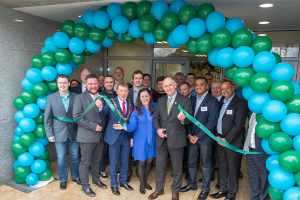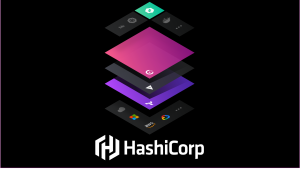VMware CIO Says Company Will Prioritize Rapid Release Cycle, Software Defined Data Center Transition and User Experience for the Next Year
![]() In their continuing and exclusive coverage of VMWorld 2012, John Furrier and Dave Vellante spoke with Mark Egan, VMware Chief Information officer. The panelists discuss organizational challenges to implementing IT as a service, Cloud Foundry usage, the increasing need for multi-vendors and VMware’s priorities over the next twelve months.
In their continuing and exclusive coverage of VMWorld 2012, John Furrier and Dave Vellante spoke with Mark Egan, VMware Chief Information officer. The panelists discuss organizational challenges to implementing IT as a service, Cloud Foundry usage, the increasing need for multi-vendors and VMware’s priorities over the next twelve months.
Vellante asks what IT transformation, particularly with IT as a service means to VMware. Egan explains, when it comes to implementing IT as such, it’s important to look at the journey holistically “from a people, process, technology perspective.” Egan believes “the people side is the hardest,” having a skilled an open staff willing to embrace the technology is crucial. VMware invests a lot in training to make sure their staff is aptly skilled. Trained architects will be important in such processes given that some architecture will be on premise and other aspects will be in a public cloud. Egan advises everyone to look at the organization, honestly examining whether they have the right people and processes in place.
Vellante concludes that the biggest challenge people cite in moving to IT as a service is the organizational issue and inquires about how VMware aligned their technology, people and processes in this regard. Egan says, aggregating VMware’s strongest IT staff, “We formed a project team called VFred, and we gave them the challenge [of] running all of our business in a private cloud.” Rather than trying to get the entire organization into a new model, VMware created a separate group before “proliferating through the rest of the department what we’ve learned on this journey of moving to the cloud.”
Egan also shares how VMware is using Cloud Foundry. The company developed a mobile app for their customers called “MyVMware.” Egan notes, the goal for VMware was to “bring a consumer experience into the enterprise…what we need to do is have [a] Facebook or Twitter, which requires no training, no manuals, so you have this great experience, but then we’re able to change it in a rapid fashion.” Egan stresses the importance of developing a rapid release cycle adding, “We’re not thinking about a release we’re going to do in 90 days, we’re thinking about how many things are we going to do this week.”
Given changes in the big data landscape, Furrier asks what new services a CIO roll can roll out with the new environment, which may not have been on their radar a few years ago. Egan responds: “There’s an enormous amount of data out there available in a less structured format. My challenge to my peers is how do you take that unstructured information in a more real-time fashion and use it to drive your business.” This approach runs counter “to a data warehouse, which is really looking at things in the rear-view mirror.”
Furrier notes that technological trends are swinging back around with the returning discussion of multi-vendors asking, “How has the multi-vendor equation changed from the CIO’s perspective? Or, has it changed?” Egan suggests, “If you look at what’s happened to compute in the past, if you apply that to storage and you apply that to network, you can operate this all with software and you can move much faster. So, in those cases, you’re going to look at pools of resource as opposed to individual technologies or vendors.” Egan thinks the trend is productive because IT professionals add value through applications, increasing revenue, reducing costs and improving customer satisfaction. Going forward, he believes companies will not be able to get all the necessary components from a single vendor. Egan suggests, “You’re going to have multiple vendors that you work with. As an IT professional, you’re going to have to decide, ‘If I can buy a service, I’ll buy a service…If I have to buy a package, I’ll buy a package,’ but we’ve got to integrate all these.”
VMware has ambitious plans for the company’s future. VMware has not yet implemented DevOps, but bringing operational and application development together is not out of the question. In the next twelve months, VMware’s main priority will be moving to the Software Defined Data Center, and exploring, on the application side, “how do we enhance consumer experience [and] end-user area, deploying it where you can think of it as an app store that is device independent.”
A message from John Furrier, co-founder of SiliconANGLE:
Your vote of support is important to us and it helps us keep the content FREE.
One click below supports our mission to provide free, deep, and relevant content.
Join our community on YouTube
Join the community that includes more than 15,000 #CubeAlumni experts, including Amazon.com CEO Andy Jassy, Dell Technologies founder and CEO Michael Dell, Intel CEO Pat Gelsinger, and many more luminaries and experts.
THANK YOU











